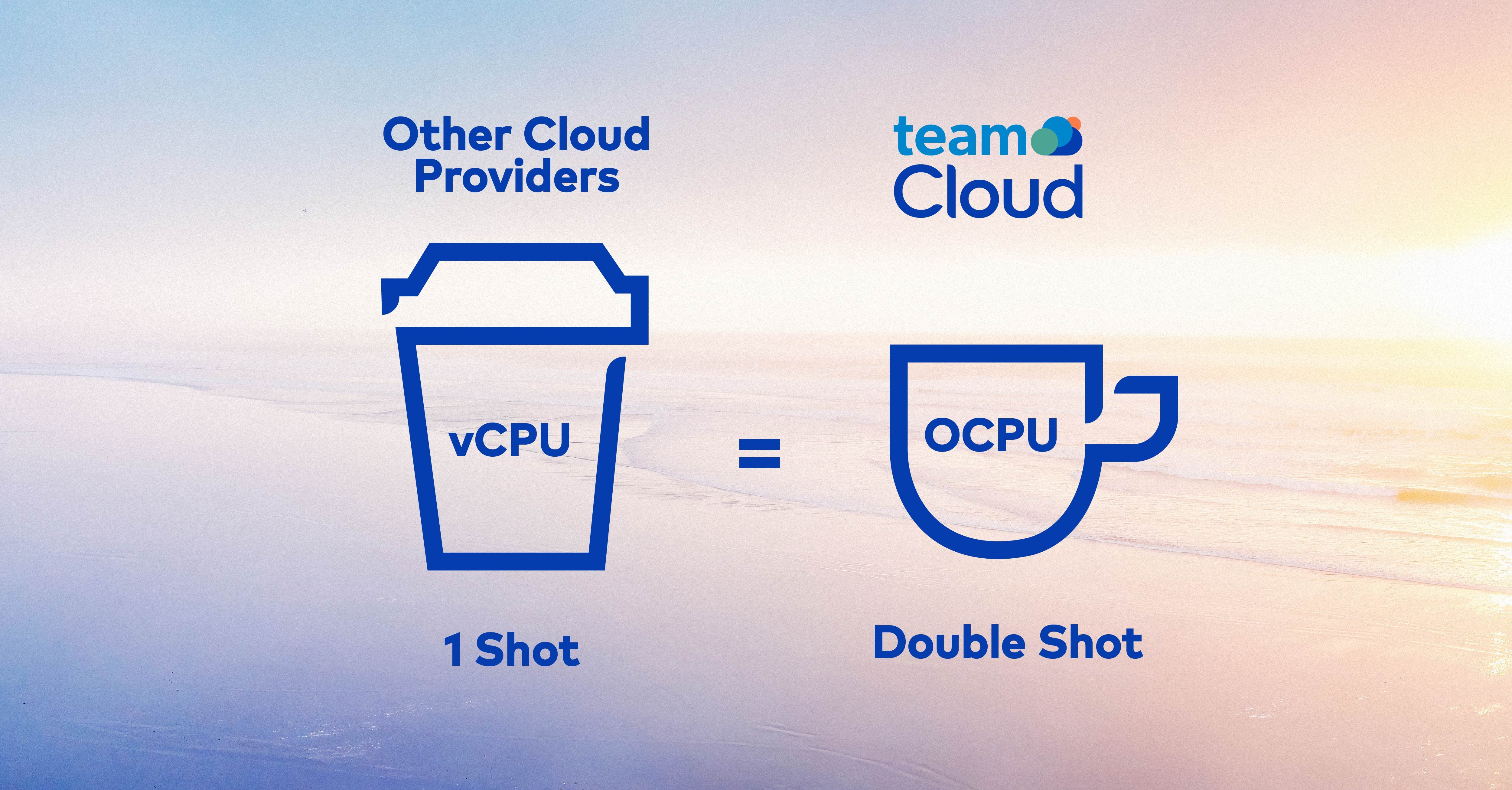6 Min Read
With growing demand for reliable, cost-effective cloud services across New Zealand, understanding what sets TEAM Cloud apart from other hyperscale sovereign cloud providers is more important than ever.

A key point - not all clouds provide equal value. And a large part of this is down to OCPUs vs vCPUs.
Real value goes beyond low rates or flashy features. Real value is about performance, flexibility and control. That’s why we want to clarify a common point of confusion: how OCPUs compare to vCPU, and how TEAM Cloud provides more value than our competitors in this regard (on top of our competitive rates!).
OCPU vs vCPU: Why Where and What You Compute with Matters
In the cloud world, not all CPUs are created equal — and not all cloud providers are transparent about what you're actually getting when you spin up compute resources. At TEAM Cloud, we believe in keeping things simple, powerful, and honest.
That’s why we think it’s time to clear up one of the most misunderstood aspects of cloud infrastructure: the difference between an OCPU and a vCPU, and why it really matters to your performance, pricing, and long-term cloud strategy.
What’s the Difference Between an OCPU and a vCPU?
Let’s start with the basics:
-
A CPU core is a physical unit of processing power. Modern CPUs, especially the common x86 variety, are capable of running two execution threads per core — thanks to a feature called hyper-threading.
Now, here’s where things diverge in the cloud world:
-
vCPU (Virtual CPU):
Most major cloud providers (like AWS, Azure, and Google Cloud) sell compute in vCPUs, which represent just one execution thread — essentially half of a physical core. -
OCPU (Oracle CPU):
In Oracle Cloud Infrastructure (OCI) — the backbone of TEAM Cloud’s compute platform — 1 OCPU gives you the entire physical core, including both threads.
Why Does This Matter?
Let’s break down why this difference isn’t just technical trivia — it has real-world consequences:
1. More Compute Power Per Unit with TEAM Cloud
In TEAM Cloud’s Oracle Cloud Infrastructure (OCI), an OCPU (Oracle CPU) corresponds to a full physical CPU core — not just a thread. In contrast, most other cloud providers offer vCPUs, which represent a single thread of a core, not the whole thing.
Since modern x86 CPUs run two threads per physical core, this means one OCPU in TEAM Cloud equals two vCPUs elsewhere. The result? You're getting double the processing power per unit, which translates directly into better performance, more efficient scaling, and clearer value for your cloud investment.
Here's a quick analogy to explain this further.
Imagine buying a coffee:
-
Other cloud providers sell you 1 shot (vCPU).
-
TEAM Cloud gives you a full double shot (OCPU) — for the same or even better value.

2. Simpler, More Transparent Pricing
Because an OCPU = a full core, it’s easier to predict and understand how many units you’ll need — and how your application will perform.
With vCPUs, it’s easy to under-provision (and be disappointed) or over-provision (and overspend) — especially when performance starts to matter.
3. Better Value for Money
You might pay a bit more per OCPU, but you're getting twice the computing capacity compared to a vCPU.
That means:
-
Fewer units to achieve your goals
-
Lower total cost of ownership
-
Less complexity in scaling
4. Built for High-Performance Workloads
Whether you’re running databases, analytics, machine learning, or enterprise workloads — you want real performance, not synthetic abstraction.
OCPUs are ideal for:
-
Oracle Autonomous Databases
-
Enterprise ERP systems
-
Data-heavy applications
-
Real-time services
5. It’s Not Just About What You Use — It’s Where You Use It
And here's the best part: with TEAM Cloud, you’re not just getting high-performance compute — you're getting it in a New Zealand-owned, sovereign cloud environment. Your data and workloads stay under local control, with enterprise-grade infrastructure, backed by Oracle, and powered by a partner-first team that gets it.
.png?width=5000&height=2613&name=Copy%20of%20Our%20Current%20Pricing%20Offers%20(1).png)
Final Thoughts
When you’re choosing cloud infrastructure, you shouldn’t have to decode the fine print just to understand what kind of compute you’re paying for. At TEAM Cloud, we believe in delivering real performance, real transparency, and real control — right here in New Zealand.
Next time you compare cloud providers, don’t just look at the price per unit. Ask what each unit actually is. And remember that with TEAM Cloud, one unit (and your money) goes a lot further.
